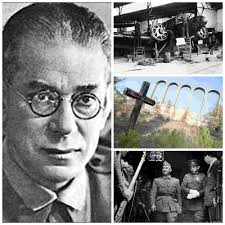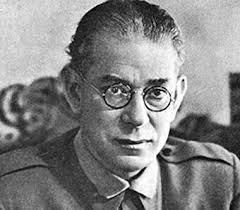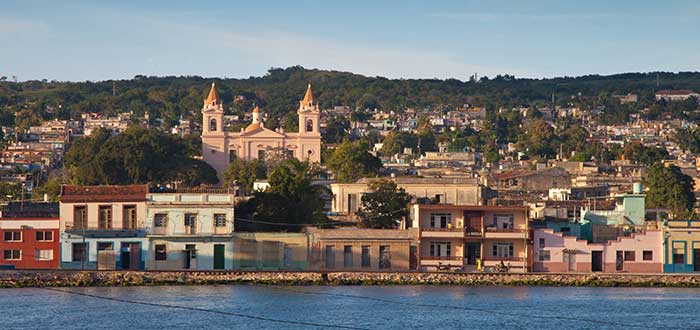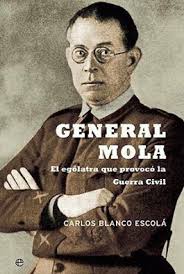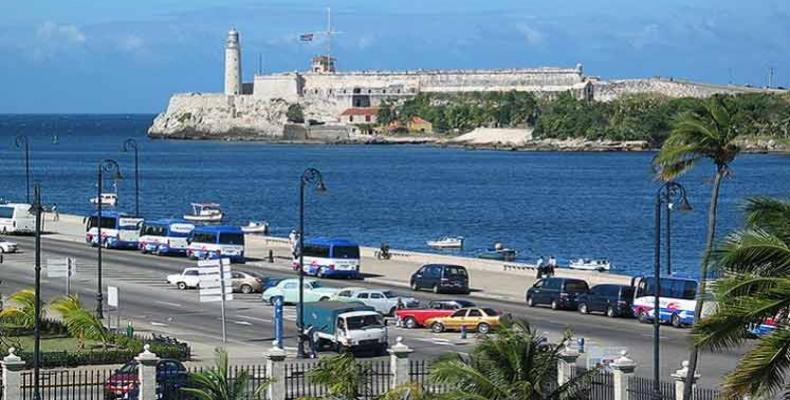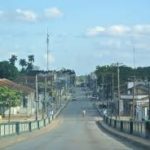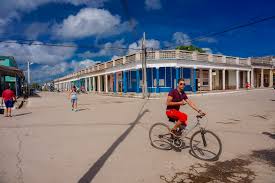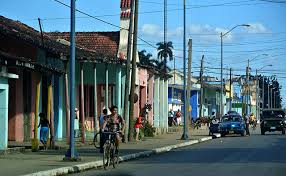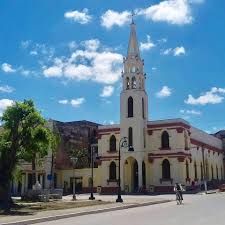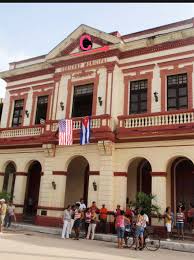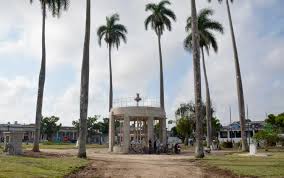 SIAN CHIONG, CUBAN SINGER AND ACTOR WITH SUCCESSFUL CAREER ABROAD. PHOTOS/VIDEOS.
SIAN CHIONG, CUBAN SINGER AND ACTOR WITH SUCCESSFUL CAREER ABROAD. PHOTOS/VIDEOS.
Sian Chiong Crehuet was born in Havana, on October 27, 1993, he is a Cuban actor and singer member of the musical group Ángeles.
He began his studies and graduated as an actor from the Higher Institute of Art in 2012, later he starred in a teleplay that opened the doors to music. His preferences include acting and manga cartoons.
ARTISTIC CAREER
He began to sing with Osmany García, but since he was not satisfied with the genres interpreted by him, he began a search for identity and participated in an audition to form Los Angeles, a call in which he was selected as a member of the group. He was also an actor in the Cuban telenovela ‘Santa María del Porvenir’ playing the role of Alejandro (son of Félix). I work on a teleplay called “Neither few nor crazy”, which boosted his artistic life.
https://youtu.be/eIHF8ysqVdQ
(Press ^ Here)
Sian Chiong sings “Dime que me Amas”
After joining Los Angeles at the end of 2009, he began his artistic career. At the end of 2010, they had the opportunity to record an album of their own production, entitled: Confesión, marking their identity.
On this album, the songs are authored by the members themselves, who also arrange all the songs and have the help of various musicians. Months later, after his debut, his current international label ¨S.P. Latin Records¨, launched the Album on the international market in June 2011.
CAREER IN MEXICO.
For three years he has been conducting a successful artistic career in Mexico, which has opened his arms to him as he has always done with Cubans, who have developed their artistic careers there.
Known for his performances in “El Corazón no se equivoca” (“The Heart Is Never Wrong” in 2019, “Súbete a mi Moto” and “La mexicana y el güero” in 2020.
‘Súbete a mi moto’ is a musical and biographical web series based on the youth group Menudo, which has a total of 15 one-hour chapters. and it premiered globally in streaming via Prime Video on October 9, 2020.
https://youtu.be/JCAcBfuPYfs
(Presione ^ Azul)
Sian Chiong canta “Señorita”.
Being the son of a television producer, Sian says that he has become a person who demands too much of himself, that is why he is very careful with the role he plays.
His character in the telenovela “La Mexicana y el güero” inspired him to finish the song with which he will return to music. Chiong began the melody and the lyrics of the song “Sentí” as a result of a very difficult personal moment, but it was not until he recorded the scenes of Diego, his homosexual character that, based on his experiences, he finished it.
Starring actor in the telenovela ‘La mexicana y el güero’, on Televisa, is filmed in the middle of the Covid-19 pandemic.
Also a year ago he started as a soloist with some ballads, but this is the first time that he does an acoustic song with which he wants to share a message of finding hope in love.
“Your sexual preference does not define who you are, your actions are what make it”, says the actor.
Due to the pandemic, this year he learned to enjoy his solitude away from his family, he learned to cook better, he did exercise and music; He hopes for the New Year to be able to visit his mother in Cuba and will release other singles, including a duet with his countryman, Julio Camejo, with whom he has forged a good friendship within the telenovela forum.
 SIAN CHIONG, CANTANTE Y ACTOR CUBANO QUE TRIUNFA EN EL EXTRANJERO.
SIAN CHIONG, CANTANTE Y ACTOR CUBANO QUE TRIUNFA EN EL EXTRANJERO.
Sian Chiong Crehuet nació en la Habana, el 27 de Octubre de 1993, es un actor y cantante cubano miembro de la agrupación musical Ángeles.
Inició sus estudios y se graduó como actor en el Instituto Superior de Arte en 2012 , posteriormente protagonizó un teleplay que le abrió las puertas a la música. Entre sus preferencias destacan la actuación y los dibujos animados manga.
CARRERA ARTISTICA
Comienza a cantar con Osmany García, pero al no satisfacerle los géneros interpretados por este, emprende una búsqueda de identidad y participa en una audición para formar Los Ángeles, convocatoria en la cual fue seleccionado como integrante del grupo. Además fue actor en la telenovela cubana ‘Santa María del Porvenir’ interpretando el papel de Alejandro (hijo de Félix). Trabajo en un teleplay llamado “Ni pocos ni locos”, el cual impulso su vida artistica.
https://youtu.be/kv_zSmjasVI
(Presione ^ Azul)
Sian Chiong canta “Senti”
Luego de integrarse en Los Ángeles a finales de 2009, empieza su trayectoria artística. A finales del año 2010 les llega la oportunidad de grabar un disco de producción propia, titulado: Confesión, marcando su identidad.
En este disco los temas son de la autoría de los propios integrantes, los que además hacen los arreglos de todas las canciones y cuentan con la ayuda de varios músicos. Meses más tardes, después de su debut, queda muy interesada su actual disquera internacional ¨S.P. Latin Records¨, la cual lanza al mercado internacional el Álbum en junio del año 2011.
CARRERA EN MEXICO.
Desde hace tres años realiza una exitosa carrera artistica en México, que le ha abierto los brazos como siempre lo ha hecho con los cubanos, que han desarrollado sus carreras artisticas alli.
Conocido por sus actuaciones en “El Corazón no se equivoca” (“The Heart Is Never Wrong” en 2019, “Súbete a mi Moto” y “La mexicana y el güero” en 2020.
‘Súbete a mi moto’ es una serie web de género musical y biográfico basada en la agrupación juvenil Menudo, que cuenta con un total de 15 capítulos de una hora. y se estrenó de forma global en streaming a través de Prime Video el 9 de octubre de 2020.
https://youtu.be/4njGBsn6XB4
(Presione ^ Azul)
Sian Chiong recordando a “Menudo”.
Siendo hijo de un productor de televisión, Sian asegura que se ha convertido en una persona que se autoexige demasiado, por eso es muy cuidadoso con el papel que desempeña.
Su personaje en la telenovela “La mexicana y el güero” lo inspiró para terminar la canción con la que volverá a la música. Chiong comenzó la melodía y la letra del tema “Sentí” a raíz de un momento personal muy difícil, pero no fue hasta que grabó las escenas de Diego, su personaje homosexual que, basándose en sus vivencias, la terminó.
Actor protagonico de la telenovela ‘La mexicana y el güero’, de Televisa, se graba en medio de la pandemia del Covid-19.
Tambien desde hace un año comenzó como solista con algunas baladas, pero esta es la primera vez que hace un tema acústico con el que quiere compartir un mensaje de encontrar esperanza en el amor.
“Tu preferencia sexual no define quién eres, tus acciones son las que lo hacen”, asegura el actor.
Debido a la pandemia, este año aprendió a disfrutar su soledad lejos de su familia, aprendió a cocinar mejor, hizo ejercicio y música; espera para Año Nuevo poder visitar a su mamá en Cuba y lanzará otros sencillos entre los que se incluye un dueto con su paisano, Julio Camejo, con quien ha forjado una buena amistad dentro de foro de la telenovela.
Agencies/ Wiki/ D’Cubanos/ Yucatan/ Extractos/ Excerpts/ Internet Photos/ YouTube/ Arnoldo Varona/ www.TheCubanHistory.com
THE CUBAN HISTORY, HOLLYWOOD.













